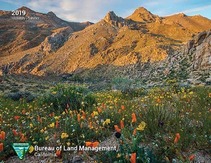 Enjoy the Beauty of California All Year Long with a 2019 Planner
The Bureau of Land Management manages 15 million acres of public lands in California - nearly 15 percent of the state - and 1.6 million acres in northwestern Nevada. This year's monthly planner features stunning public lands across the state with impressive employee photography. Get your FREE planner while supplies last. (BLM website)
|
Traveling this holiday season? Please remember to check road conditions and closures. Travelers can also download the QuickMap app, quickmap.dot.ca.gov, or call 1-800-427-7623 for constantly updated highway information. (California Department of Transportation)
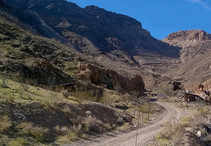 BLM Approves the Keystone Exploratory Drilling Project in Inyo County
The Bureau of Land Management, Ridgecrest Field Office, has approved the Keystone exploratory drilling project located at the Goler Wash area, southern Panamint Mountains, in Inyo County, California. The BLM decision record authorizes Bush Management Company to proceed with drilling on existing unpatented lode mining claims that will be supported by existing roads and pads, with several of the drill sites being in existing road surfaces. The project will employ about six workers and less than one acre of disturbance is anticipated. (BLM news release)
|
 BLM Mother Lode Field Office Lifts Emergency Fire Restrictions
The Bureau of Land Management Mother Lode Field Office is lifting its emergency fire restrictions at 9 a.m., Nov. 30, on approximately 230,000-acres of public land, due to reduced wildland fire potential. This action will reopen target shooting on public lands in all or portions of 14 central California counties. The easing of fire restrictions apply to public lands managed by the Mother Lode Field Office in the Sierra Nevada foothills in Amador, Calaveras, Colusa, El Dorado, Mariposa, Merced, Nevada, Placer, Sacramento, San Joaquin, Stanislaus, Sutter, Tuolumne and Yuba counties. The lifting of restrictions also affects BLM recreational areas along the American, Merced, Mokelumne, South Yuba and Tuolumne rivers. Fire restrictions were originally initiated on May 25. (BLM news release)
|
 BLM Central Coast Field Office Lifts Emergency Fire Restrictions
The Bureau of Land Management Central Coast Field Office is lifting its emergency fire restrictions on Nov. 30, on approximately 300,000-acres of public land, due to reduced wildland fire potential. This action also reopens target shooting at Panoche, Tumey and Griswold hills, as well as on public lands from the Pacific Coast to the San Joaquin Valley. The easing of fire restrictions apply to public lands managed by the Central Coast Field Office in Alameda, Contra Costa, Fresno, Merced, Monterey, San Benito, San Joaquin, San Mateo, Santa Clara, Santa Cruz and Stanislaus counties. Fire restrictions were initiated on May 25. (BLM news release)
|
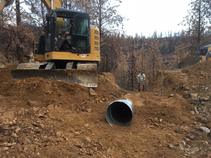 BLM's Redding Field Office Repairs Carr Fire Damages on Public Lands
After identifying the damage caused by the Carr Fire, BLM's Redding Field Office quickly started repairing damaged culverts, including roughly 1,500 feet and over 32 crossings. Repairs took place along the Rail Trail which parallels Keswick Reservoir, the beginning of the lower Sacramento River, a vital waterway for California. (BLM California Facebook)
|
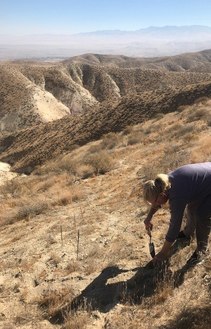 BLM and CSU, Bakersfield Team Up to Detect Valley Fever
BLM’s Bakersfield Field Office teamed up with Antje Lauer, a research professor at California State University, Bakersfield, to conduct soil samples for the detection of Valley Fever (coccidioidomycosis) spores within the Temblor Range Special Recreation Management Area. On November 2, 2018, BLM Natural Resource Specialist Tiera Arbogast and Antje Lauer collected nearly 40 samples for the detection of Valley Fever within the Temblor Range, where thousands of visitors enjoy off-highway vehicle recreation every year. The Valley Fever fungus (coccidioides) is found within the top layer of soil and is particularly prevalent within the San Joaquin Valley. Inhalation of the Valley Fever fungus can cause a mild to severe infection resembling the flu. Through soil sampling, the BLM and Antje want to determine whether the fungus exists within the Temblor Range and what risks this may pose to off-highway vehicle recreationists. (BLM California Facebook)
|
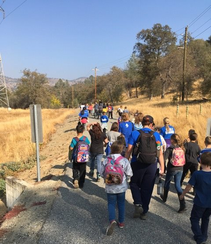 Students Enjoy a Field Trip to Public Lands
Fresno third graders visited the San Joaquin River Gorge as part of the educational field trip “Who Lives Here,” a discovery of the plants, animals and people that have called the Gorge home. Students participated in wearing animal adaptation costumes, made pine nut beads and cordage in the local Dumna tradition, created a critter based on their imagined habitats, learned about owls at the "regurgitation station", developed birding skills from Fresno Audubon members and explored how hydrology works and the history of power generation at the Gorge with Riley Young of Pacific Gas and Electric Company. It was a wonderful day of discovery. (BLM California Facebook)
|
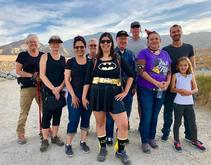 Bat-tastic Fun in the Coachella Valley!
The Coachella Valley is home to 20 out of the 21 species of bats that occur in California – making the Coachella Valley a great place to see bats any time of the year. Bats can be seen flying around every night at sunset, making their way over swimming pools, hiking trails, homes and even golf courses, drawing a lot of interest to residents and visitors in the valley. So much interest that over 3,000 people participated in 2018’s Be a Bat Hero, Bat Week in the greater Palm Springs area to learn about and support bats! (BLM California Facebook)
Related: Bats of the Coachella Wander List Segment shown during #BatWeek (Visit Greater Palm Springs website)
|
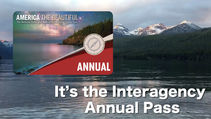 The Gift of the Great Outdoors!
Is adventure on your wish list this year? Get all your holiday shopping done today with the best deal of the season. It’s not just a pass, it’s a year’s worth of memories. Check out doi.gov/pass.
|
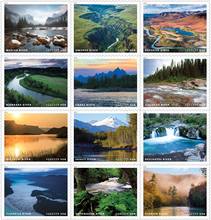 Arts, Entertainment, History and Culture Headline the 2019 Forever Stamp Lineup
In the spirit of the coming new year, the U.S. Postal Service revealed several of the new Forever stamps and other stamps to be issued in 2019. Since 1847, the stamp program has celebrated the people, events and cultural milestones unique to the history of the United States. The 2019 stamp subjects continue this rich tradition. “The miniature works of art illustrated in the 2019 stamp program offer something for everyone’s interest about American history and culture,” said U.S. Postal Service Stamp Services Executive Director Mary-Anne Penner. “From legendary poet Walt Whitman to the entertainment genius of Gregory Hines to the majestic beauty of our Wild and Scenic Rivers, this program is diverse and wide ranging and tells America’s story on stamps.”
The US Postal Service 2019 stamp lineup also includes Wild and Scenic Rivers. Four Bureau of Land Management-managed rivers are featured!
|
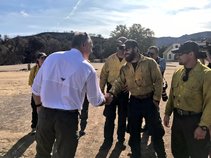 Zinke: What It Will Take to Prevent Deadly Wildfires
Within minutes of the deadly Camp Fire's ignition, several acres were ablaze as fire spotters stood by helplessly. While Capt. Matt McKenzie of the California Department of Forestry and Fire Protection responded quickly, firetrucks were unable to reach the blaze and helicopters and air tankers were grounded due to the timing and weather, according to a report. Within two hours, the fire tore through the towns of Concow and Paradise before it raged on, claiming thousands of structures and dozens of lives. President Donald Trump and I both saw the devastation of the fire on our recent trips to California: piles of rubble recognizable as houses only by their chimneys and charred appliances, and vehicles melted to the pavement in pools of molten aluminum. We also saw the heroism of firefighters, first responders and volunteers working together to battle the blaze and help the community. (CNN News)
|
 Following the People's Tree
The tradition of the Capitol Christmas Tree, or "The People’s Tree," began in 1964 when Speaker of the U.S. House of Representatives John W. McCormack (D-MA) placed a live Christmas tree on the Capitol lawn. This tree lived three years before succumbing to wind and root damage. In 1970, the Capitol Architect asked the U.S. Forest Service to provide a Christmas tree. Since then, a different national forest has been chosen each year to provide "The People’s Tree." This national forest also works with state forests to provide companion trees that are smaller Christmas trees for offices in Washington, D.C. The Willamette National Forest in Oregon will provide the 2018 U.S. Capitol Christmas Tree. (Capitol Christmas Tree website)
Related: Track the Tree (SkyBitz)
Related: A 'Noble' Decision in Oregon: Selecting the Capitol Christmas Tree (Architect of the Capitol website)
|
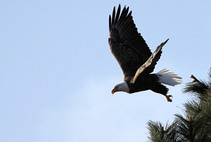 True of False
Each winter from November through February a migrating population of bald eagles visits the Lake Coeur d' Alene area in northern Idaho to feed on spawning kokanee salmon.
Keep scrolling to find out!
|
 December 4 and 13: BLM to Host Cotoni-Coast Dairies Public Access Workshops
The Bureau of Land Management Central Coast Field Office will host two public workshops to explore recreational access opportunities at the Cotoni-Coast Dairies unit of the California Coastal National Monument in Santa Cruz County. (BLM news release)
|
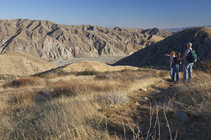 December 13-16: BLM, USFS and Partners Celebrate Pacific Crest Trail 50th Anniversary
The Bureau of Land Management Bakersfield Field Office, Sequoia National Forest, Giant Sequoia National Monument and High Sierra Volunteer Trail Crew invite the public to a family friendly work weekend on the Pacific Crest Trail from Dec. 13-16, in honor of the 50th anniversary of the PCT and the National Trails System Act. (BLM news release)
|
 December 14 and 15: Meeting Planned for the BLM Desert Advisory Council
The BLM's California Desert Advisory Council will hold a public meeting on December 14-15, 2018. The DAC will participate in a field tour of BLM-administered public lands on Friday, December 14, 2018, from 10 a.m. to 5 p.m. and will meet in formal session on Saturday, December 15, 2018, from 9 a.m. to 5 p.m. (BLM news release)
|
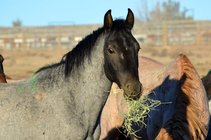 Now - 2019: Bring Home a Wild Horse or Burro
The BLM Wild Horse and Burro Program is excited to announce nearly 70 events this year as part of BLM's efforts to find good homes for our nation's wild horses and burros. Known for their intelligence, endurance and loyalty, wild horses and burros, with the right training, are outstanding for trail riding, packing, working and have successfully competed for awards in numerous fields from endurance riding to dressage. With more than 81,000 wild horses and burros on BLM-managed public lands, these wild icons of our American history need your help more than ever. Without any natural predators that can control population growth, wild horse and burro herds grow rapidly on the range and can quickly overcome the land's ability to support them. The BLM works to maintain healthy wild herds by gathering excess animals and placing them into good homes. (BLM website)
|
|